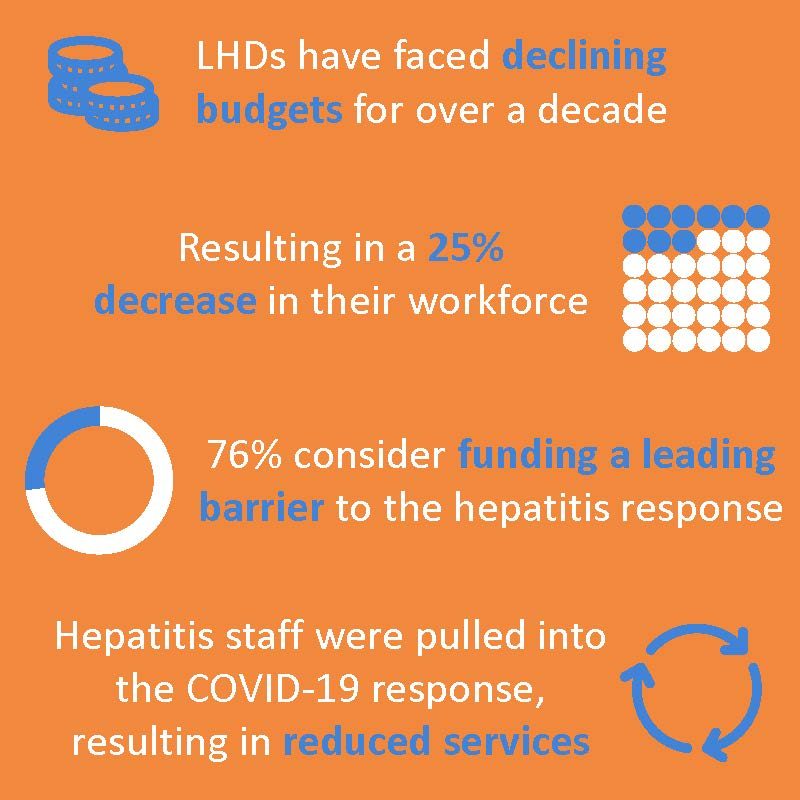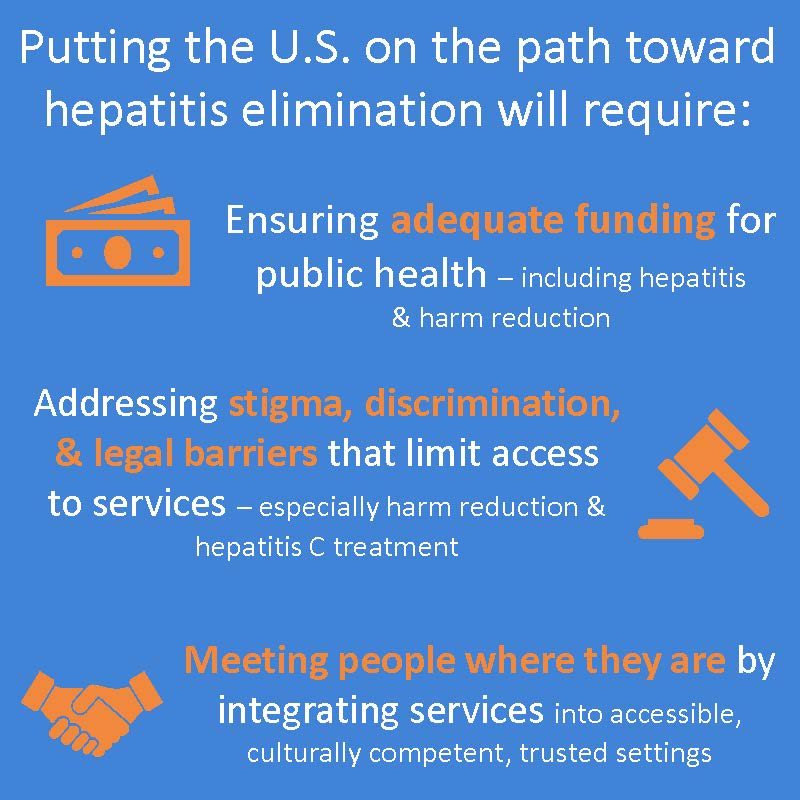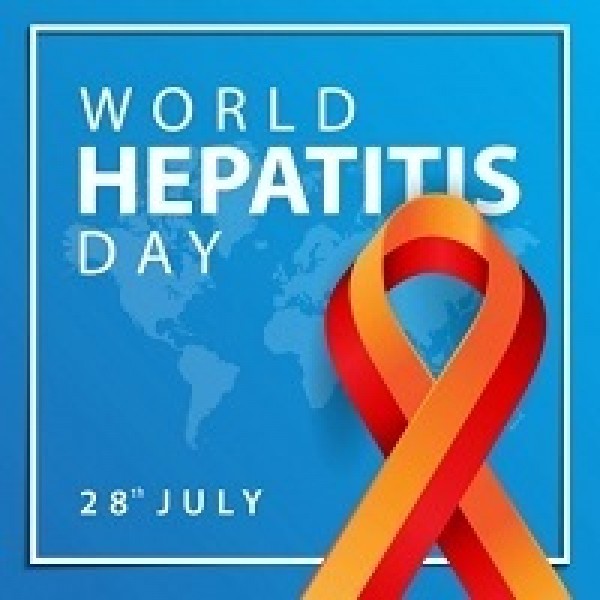July 28th is World Hepatitis Day, an opportunity to raise awareness about, recognize the impact of, and decrease the stigma associated with viral hepatitis across the world. Viral hepatitis is a leading public health threat, contributing to cirrhosis, liver cancer and transplants, and—prior to the COVID-19 pandemic—more deaths in the United States than any other infectious disease.
Visit here to see the World Health Organization’s key messages for World Hepatitis Day 2022 and visit here to access graphics, videos, and posters to share on social media.
Below, learn more about viral hepatitis in the United States and the role of local health departments in the prevention and elimination of viral hepatitis.
Viral Hepatitis in the U.S. and the Role of Local Health Departments in Prevention & Elimination
The viral hepatitis epidemic in the U.S. involves three related viruses: hepatitis A (HAV), which is primarily spread through person-to-person contact or ingestion of contaminated food or water; hepatitis B (HBV), which is primarily spread through sexual contact, sharing syringes and other injection equipment, or perinatally from parent to child at birth; and hepatitis C (HCV), which is primarily spread through injection drug use but can also be spread sexually or perinatally.
In recognition of Hepatitis Awareness Month, NACCHO is launching a new infographic characterizing viral hepatitis trends in the U.S., opportunities and barriers related to the prevention and elimination of viral hepatitis, and the role of local health departments (LHDs) in hepatitis prevention and elimination. Check out the infographic here.
We have the tools to eliminate viral hepatitis in the U.S., but social and structural barriers, stigma and discrimination, and insufficient funding limit access to services and contribute to inequities significant gaps and barriers remain:
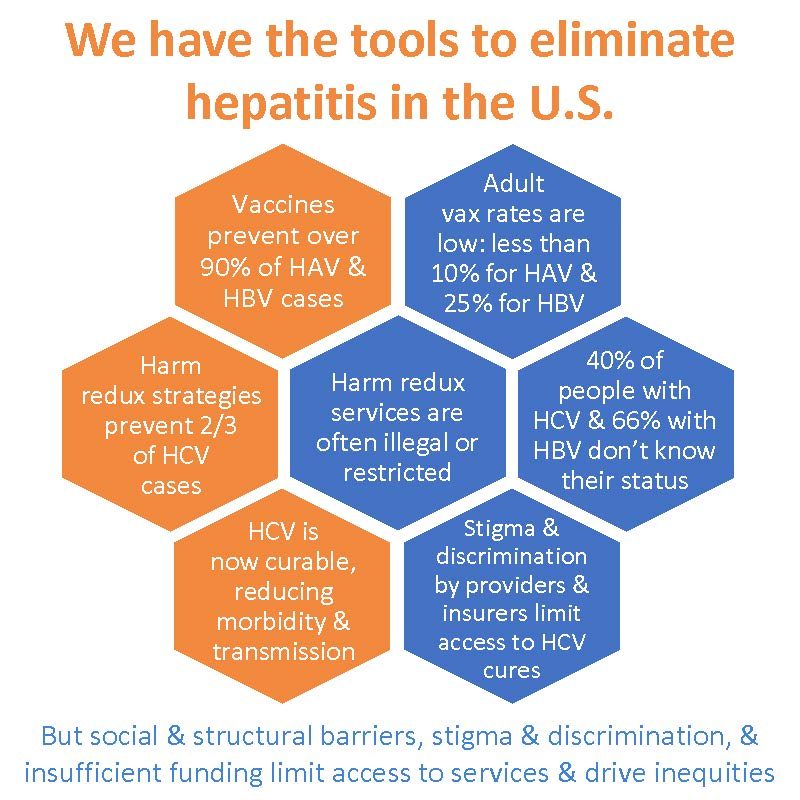
As a result of these barriers and gaps, viral hepatitis is on the rise in the U.S.:
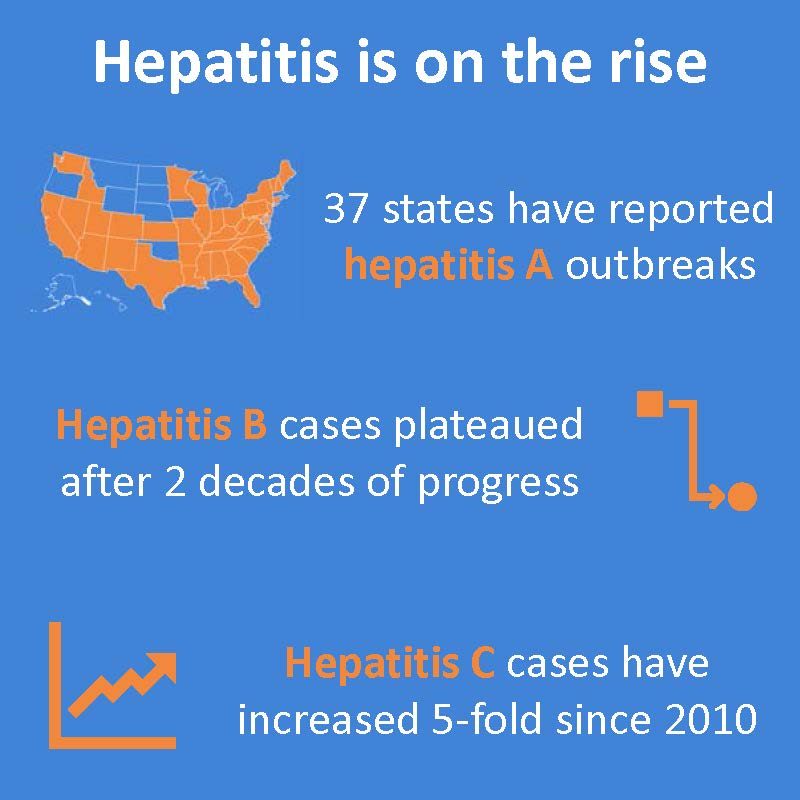
LHDs play a critical role in the prevention and elimination of viral hepatitis, assuring access to hepatitis surveillance, prevention, testing, and treatment services.
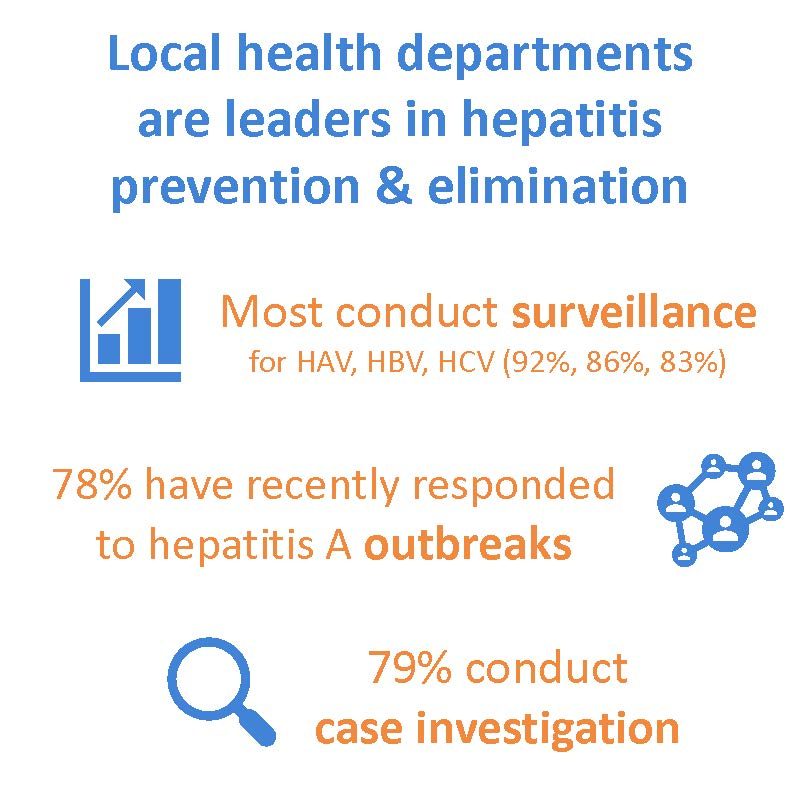
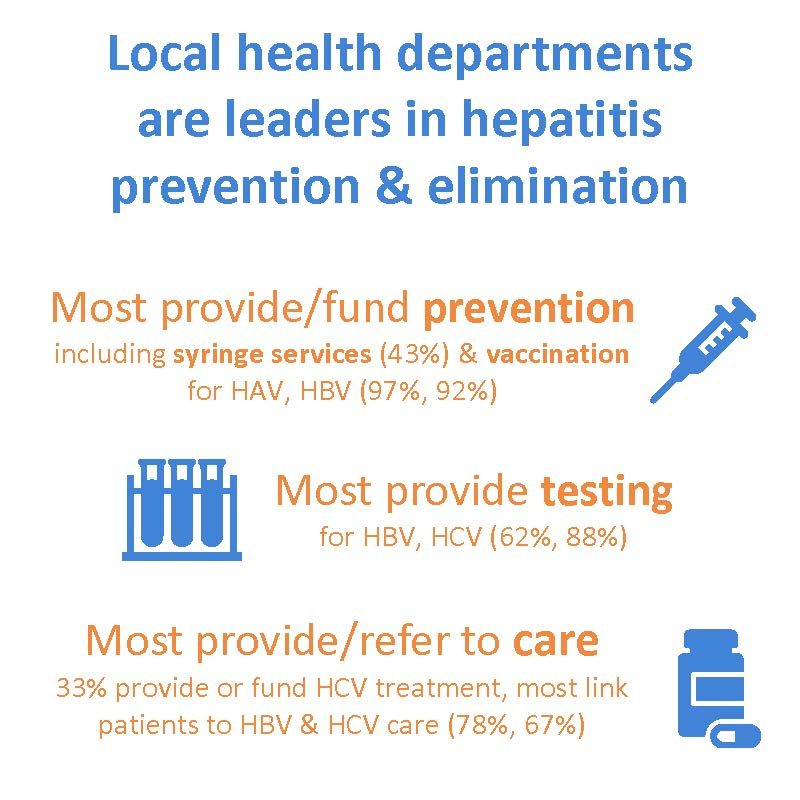
LHDs also lead a coordinated, cross-sector approach to hepatitis within the broader context of the syndemic of HIV/STIs, viral hepatitis, and substance use.
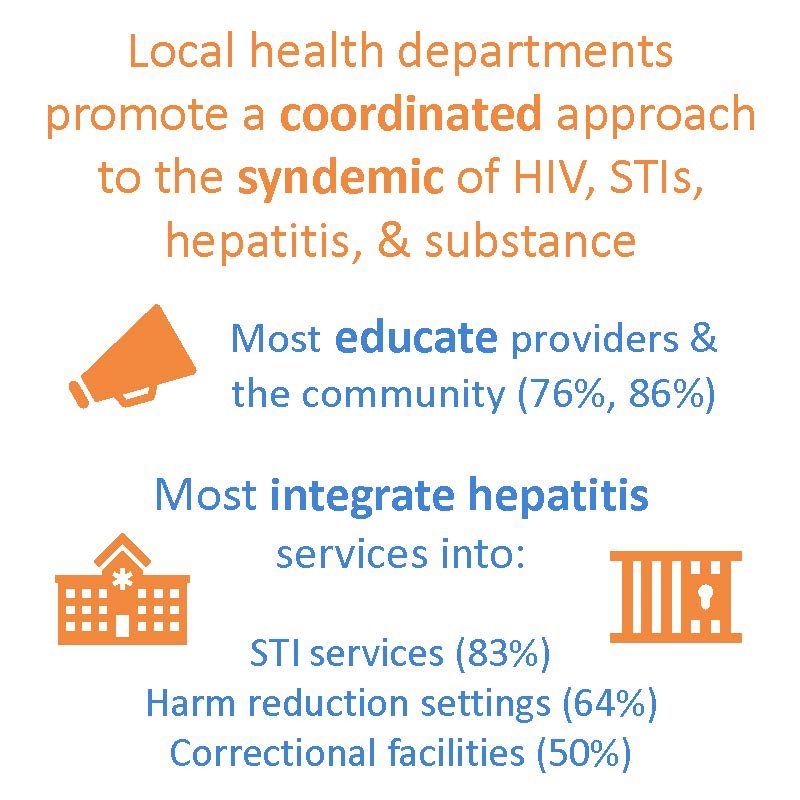
However, LHDs face myriad barriers and need significant support to scale up hepatitis services and ultimately prevent and eliminate viral hepatitis:
